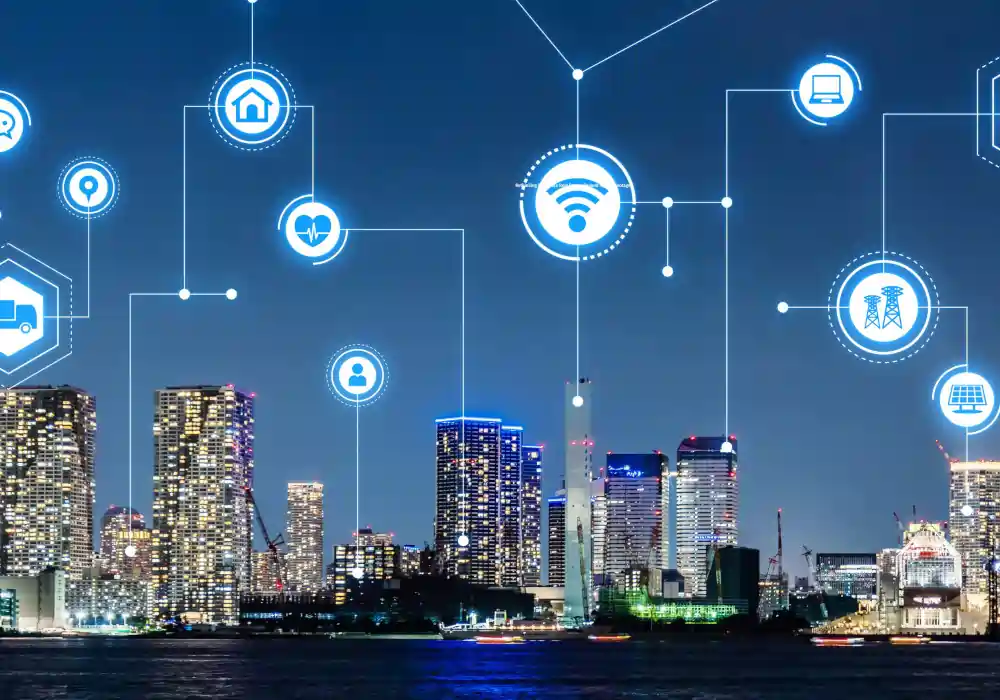Smart Building Technology: How It’s Changing Our Lives
In the world of modern technology, smart buildings are not just science fiction anymore. They are here, and they are changing how we live, work and think about our valuable spaces. From offices that adjust temperature before you arrive to homes that know when you’re coming back from vacation, smart building technology is making our lives easier and better in many ways that we never imagined.
But what exactly makes a building actually “smart”, and how is this technology really impacting on our lives? Let’s check and break it down.
What is Smart Building Technology?
A smart building uses technology to automatically control things like heating, lighting, operational performance, security and ventilation. It is like you are giving your building a brain that can make decisions without you having to flip every switch or adjust every thermostat or turn on and off lights.
Smart building technology refers to the integration of automation processes such as IoT devices, artificial intelligence, data analytics within a building’s infrastructure to enhance its operational performance, security and much more.
These buildings use sensors, internet connections and automated systems to:
- Monitor energy use
- Control the building temperature
- Control the building lighting
- Manage security systems
- Manage the ventilation of building
- Track who comes and goes
- Predict maintenance needs
Living and working in a smart building has been a game-changer. From the moment you walk in using face recognition access to enter into the building and the personalized lighting and climate control in the workspace, everything feels luxury and seamless.
5 Ways How Smart Buildings Are Changing Our Daily Lives
Here are the 5 ways how a smart building is changing our daily lives as follows,
1. Energy Bills Are Getting Smaller
Smart buildings are masters at saving energy. The smart building can automatically turn off the lights in an empty room, adjust heating when no one’s around and use natural light instead of electric bulbs whenever possible.
The numbers of reduction in electricity bills saving by smart buildings are impressive. Smart buildings typically use 20-30% less energy than the regular buildings. That means lower electricity bills and less strain on the power grid.
2. Comfort Levels Are Through the Roof
Smart building are experts in taking care of comfort levels. Fr example, it is really uncomfortable when you are walking into a freezing office in summer or a stuffy meeting room. Smart buildings can fix these problems before they happen.
These systems learn your preferences and adjust automatically as per your comfort. The building knows you like it cooler in the afternoon and warmer in the morning. It adjusts before you even notice you’re uncomfortable.
3. Security Is Getting Smarter
Old security systems only recorded what happened. But smart building security prevents problems before they even start.
The smart building systems can recognize faces and voices, detect unusual behavior patterns, alert security instantly when something’s wrong, lock down specific areas automatically, track everyone’s location for emergencies
4. Maintenance Happens Before Things Break
Smart buildings take care of all the maintenance. It doesn’t wait for the elevator to break down, changing lights and fans or the air conditioning to fail. They predict problems and fix them early.
The sensors in smart building monitors everything from elevator cables to air filter cleanliness. When something needs attention, the building automatically schedules maintenance as per need. This means fewer surprise breakdowns and lower repair costs.
5. Workspaces Adapt to How We Actually Work
The lockdown and pandemic changed completely how we use our office spaces. Smart buildings technology adapted the concept of smart offices quickly.
They now track which areas get used most, help people find available meeting rooms and even guide employees to less crowded spaces. Some buildings can reconfigure themselves based on daily needs.
Impact on Different Types of Buildings
Office Buildings:
Smart offices are the most important part of our modern business and becoming the working comfort for employees. Workers prefer buildings that remember their preferences and make their working day smoother. Companies are seeing higher employee satisfaction and lower turnover in smart buildings.
Residential Buildings:
Smart building and apartments offer convenience that residents preferers. Packages get delivered securely, parking spots are easier to find and energy costs stay low. Property values are higher for smart residential buildings.
Hospitals and Healthcare:
In hospitals and healthcare, smart building technology can literally save lives. These systems monitor air quality, track equipment, and help staff find patients quickly during emergencies.
Smart Building Technology Challenges
As the technology is upgrading day-by-day, even the smart building technology is not yet perfect. There are some real challenges people have such as,
Privacy Issues: Smart buildings collects lots of data about our daily habits. If someone have an access to this data and information, it is concern that someone might it use and how is it being used?
Technology Dependence: Smart building system makes our life easier and people are getting use to it and dependent. What happens if the smart systems fail? Some buildings struggle and people who are completely dependent who face real issues when their technology goes down.
High Initial Costs: Making a smart building requires significant upfront investment, which can be hard to afford for smaller property owners.
Cybersecurity Risks: The cybersecurity risks is one of the important concern as it connected buildings can be vulnerable to hackers, just like any other internet-connected device.
Future of Smart Building Technology
The future of smart buildings looks even more exciting. Here is what we all expect and the experts in technology predicts the future of smart buildings such as,
Learning AI: Buildings will get better at predicting what you need before you need it.
Better Integration: Your car, phone and building will work together seamlessly.
Sustainability Focus: Smart buildings will help us to fight climate change by using resources more efficiently.
Health Monitoring: Buildings might monitor air quality and suggest when you should take breaks or move to different areas.
Should You Care About Smart Building Technology?
Whether you’re choosing where to live or work. A smart building technology is really matters more than ever. These buildings offer some of the real benefits such as lower costs, better comfort, improved security and higher property values.
The technology is moving fast than ever, but it’s also becoming more reliable and affordable. Smart buildings is not just about having cool gadgets and automation in your building. They’re about creating spaces that work better for the people who use them.





